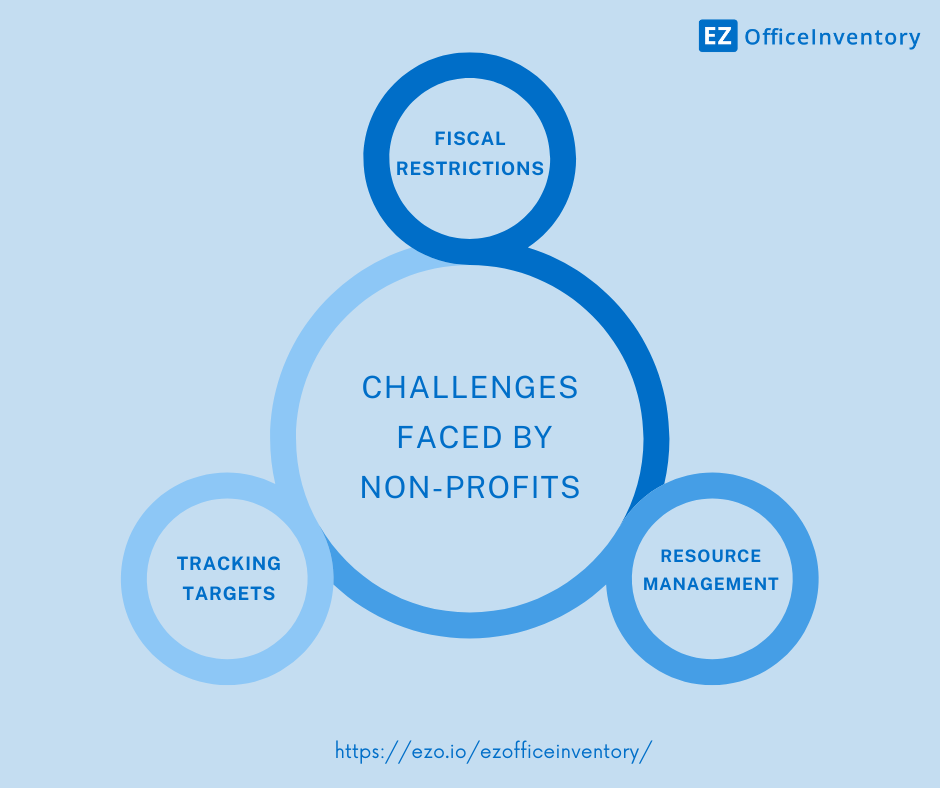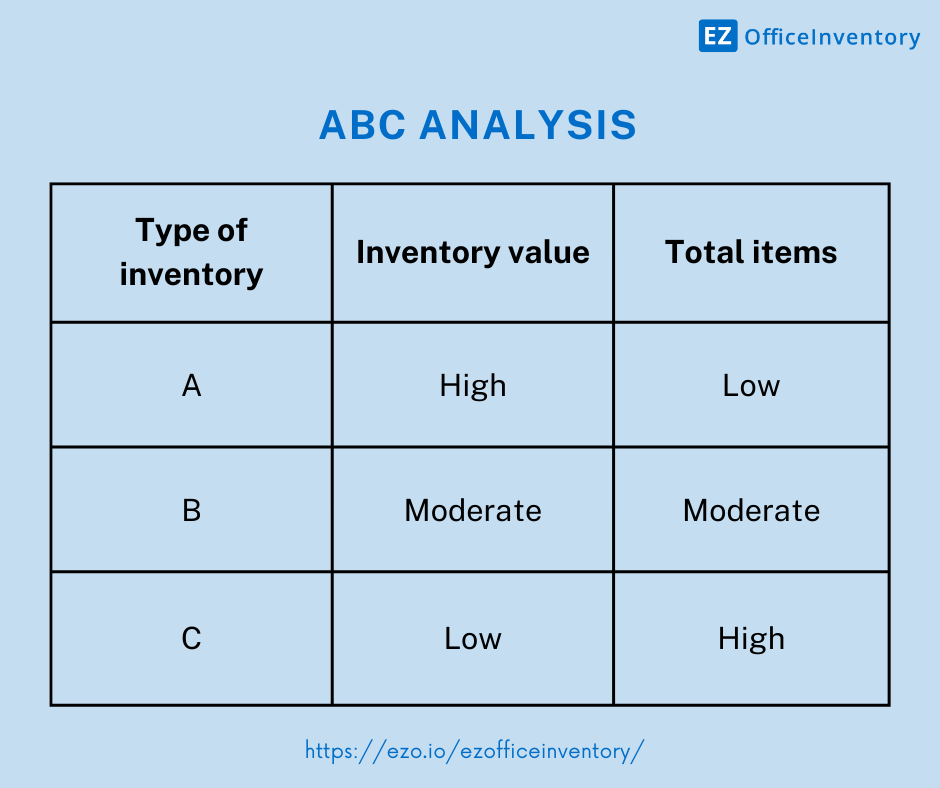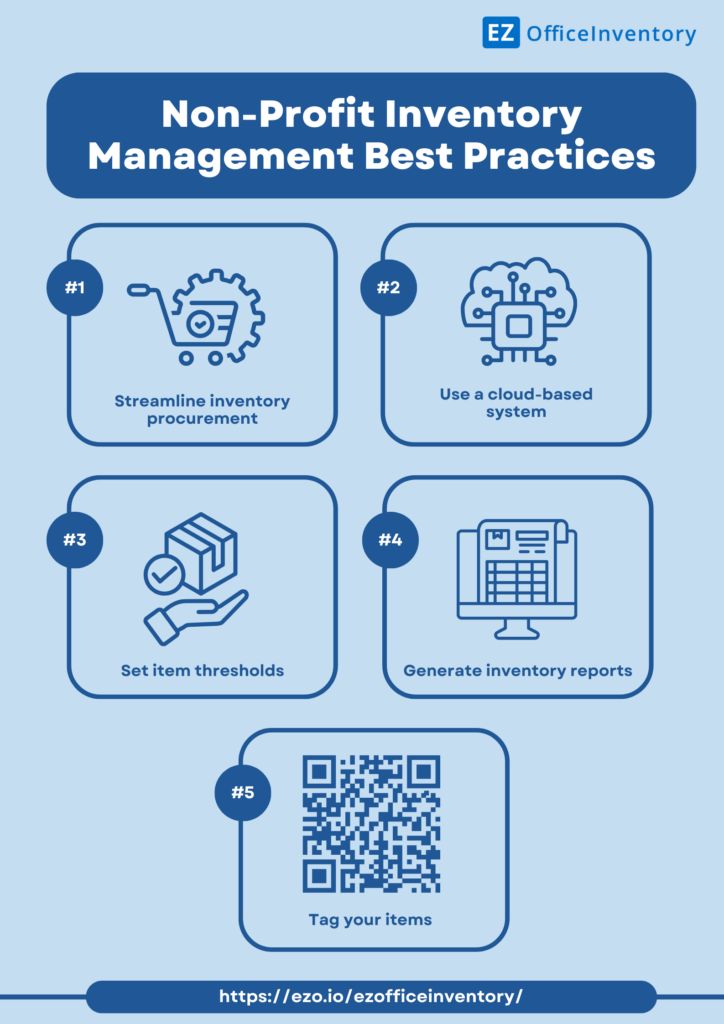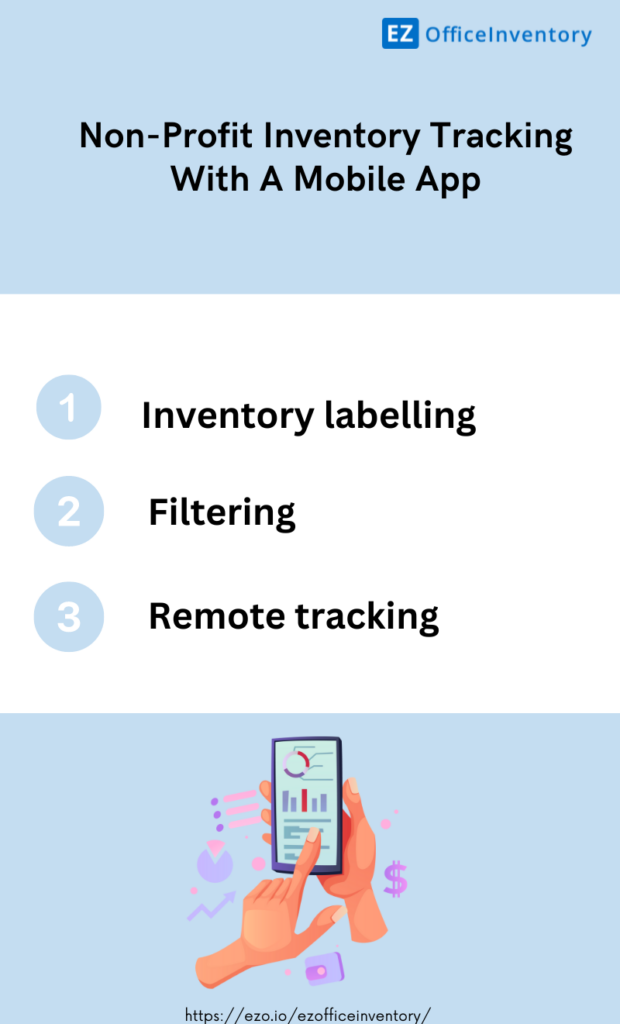Inventory management is a tedious task that necessitates the employment of smart processes and strategies. This is particularly important for non-profit organizations to better manage their funds and grants, and justify them at the end of the fiscal year.
Non-profits need to keep an exact count of where their resources have been utilized to achieve transparency. Inefficient funds and resource management can lead to administrative hurdles, like missing or duplicate items. With efficient inventory management, you can develop a streamlined process to manage your non-profit inventory items better.
This blog takes you through the nuances of non-profit inventory management and how you can enhance your organizational workflows using an inventory management system.
What does non-profit inventory management involve?
Non-profit inventory management is the organized and systematic control of materials and items used by non-profit organizations for streamlined operations. Non-profit organizations especially need to have an optimized inventory repository to keep track of their funds, donations, and inventory items available for daily operations.. A detailed repository that consolidates inventory information serves as a foundation for any non-profit organization.
Utilizing this repository, your organization can track, checkin and checkout, reserve, and maintain all inventory items with ease. These actions provide a foundation for effective non-profit inventory management, helping organizations maintain resources within the defined budget and constraints. With efficient inventory management, non-profits can significantly reduce the time and effort needed to find and track inventory items located across various warehouses.
Types of inventory non-profit organizations usually track
The table table shows some common examples of inventory items tracked by non-profit organizations:
| Type of Inventory | Examples | Non-profit Organization |
| Medical Supplies | Bandages, syringes, medications, first aid kits | Red cross, privately funded healthcare units |
| Educational Materials | Extra textbooks, school supplies, teaching aids | UNICEF |
| Household Goods | Bedding supplies, kitchenware, extra furniture | Habitat for Humanity |
| Construction Training Tools | Work gloves, measuring tapes, safety goggles | Youth Development Programs |
| Building Materials | Plywood, roofing materials, nails, insulation | Disaster Relief Organizations |

Challenges faced by non-profit organizations
There are approximately 1.8 million non-profits in the US. The market for non-profit is huge, but most non-profits face a variety of challenges with regards to managing resources, including:
1. Fiscal restrictions
Non-profits operate on tight budgets and need to track exactly where,when, and how much money is being spent. They are constantly on the lookout for optimizing the use of their assets This is much easier with a robust inventory management system in place that helps track how, where and in what quantity have the resources been used.
2. Tracking targets
Incorporating the correct tools to measure the effectiveness of how well the inventory is being managed is vital to tracking your performance. For instance, tracking inventory-related metrics including inventory gap, monthly inventory value and consumption and stock thresholds.
Such practices can help inform donors about how successful the organization has been in achieving targets and goals.
3. Resource management
Non-profits run on limited fiscal resources and to build new infrastructure, it is critical to manage existing resources efficiently. The key is to cut costs with streamlined asset and inventory management.
If you can assess the needs of the ongoing projects, you can easily outline what inventory items can be reallocated to achieve a higher asset utilization.

Best practices for streamlined inventory workflows
The significance of inventory management in non-profits is different, depending on the nature of the organization and its functions. With community service as their primary aim, they need to avoid unnecessary inventory distortions and costs associated with missing assets.
These inventory distortions can cost businesses an estimated $1.1 trillion globally. Non-profits need to avoid these costs to keep operating smoothly.
In the following section, we will walk you through some best practices to keep the costs low, streamline everyday operations and achieve transparency for your non-profit.
1. Place inventory orders automatically
Non-profits can streamline their inventory procurement processes by keeping a track of their purchase orders. This means recording and monitoring all inventory purchases in the system your non-profit is using.
Typically, you can request for new inventory and enter its relevant details into the system for timely procurement – including name, type and quantity of item needed. Vendor details can be managed as well by maintaining detailed repositories and related documents.
Simple generate an electronic purchase order (PO) to track and monitor your weekly, monthly or quarterly orders. This helps avoid stockout and allows non-profits to stay ahead of their inventory game.
2. Employing a cloud-based system
Employing a cloud-based system to consolidate asset information is a rising trend amongst non-profit organizations. It not only fulfills legal requirements but enables organizations to protect and store their data easily. Such inventory management systems are accessible from anywhere and do not require you to invest considerably in setting up a system. For instance, you do not need to buy an in-house system to perform the same functions. This level of accessibility makes it convenient for non-profits to manage inventory while not dealing with the hassle of building their personal system – which can be more costly and time consuming.
With a cloud-based system, you can obtain feature-based packages of your choice. This means you can obtain only what you need – saving upfront hardware and software costs. The system enables users to manage their data from various locations, fostering enhanced data management.
3. Item tagging
While obtaining a cloud-based system is critical to enhancing efficiency immediately and avoiding excessive costs, categorizing inventory and assigning tags come in next.
Create an asset register that contains all the information pertaining to your inventory, including name, model number, quantity, and low stock threshold details. These details help users identify their inventory items easily and ensure they are tracked at all times.
You can implement inventory categorization techniques, such as the ABC model to identify and label inventory items based on their criticality level. You can use the criteria defined in the table below:

ABC is one of the several ways you can analyze the functional importance of particular inventory items, and label them accordingly.
4. Setting item thresholds
After you have labeled your inventory, make sure you set item thresholds so you never go either understock or overstock. By maintaining optimal stock levels, organizations can ensure that they meet their organizational/project demand on time.
Whenever your stock falls below a particular threshold i.e., a set number, modern inventory management systems trigger alerts. The operations managers can take quick action and order replenishment stock before any issues arise.
Non-profits can avoid withholding costs associated with keeping stock since they are already low on funds. Maintaining optimal stock levels helps organizations achieve a higher turnover ratio which translates into optimal inventory utilization.
5. Inventory reporting
Non-profts are audited frequently owing to the nature of their operations. To ensure that there is no misuse of inventory and it remains accounted for, you can generate weekly or monthly reports. These reports provide a breakdown of how your inventory is being utilized and if there is over or under utilization.
There are various kinds of inventory reports that you can make use of including, inventory consumption and threshold inventory. You can know when new inventory items were procured, consumed and in what quantities. This breakdown outlines all the associated costs and makes it easier for non-profits to convince the stakeholders how inventory accounts for their allocated funds.

What are the top 4 benefits of inventory management for nonprofits?
There are several ways non-profit organizations can benefit from inventory tracking, like:
1. Improved risk management
Non-profits are always on the hunt for systems that can help them lower costs and can be applied throughout the organization. The aim is to mitigate risks, like unexpected stockouts, faulty inventory, inventory shrinkage and carrying costs.
Using inventory management to mitigate risks can be advantageous in several ways. You can always remain updated about your inventory location, and keep the inventory levels updated in those locations. You can even use GPS tracking to track the location of essential inventory items so that they never go missing. GPS tracking allows managers to stay updated with the real-time coordinates of inventory and track using maps, leading to enhanced item security.
Security risks can be avoided when users generate automated alerts if any anomalies are detected in the inventory management workflows. For instance, if your backup battery count falls below 20 units, then the system will automatically prompt you to take an action.
2. Timely audits
Regular audits are targeted toward matching the physical count of inventory with the recorded count to avoid discrepancies. They help non-profit organizations improve compliance by ensuring adherence to internal organizational policies. Following these policies helps achieve inventory control and detect inconsistencies in the inventory records.
Not only this, but audits are a helpful way for non-profits to control costs. They can easily identify the inventory items that are no longer needed or have gone obsolete to optimize inventory management. This analysis of inventory usage helps assess the effectiveness of your employed inventory management techniques. In case you notice any risks, you can straightaway implement strong internal controls to deter such occurrences in the future.
3. Achieve timely procurement
Nonprofit organizations have numerous events and conferences in line to raise awareness and funds. A seamless inventory supply in these scenarios helps non-profits achieve consistency and success in operations. Replenishment of existing stock and expansion of nonprofit resources are two significant ways nonprofits can ensure that.
The best plan of action could be to automate inventory management to ensure stock expansion in a timely manner. Let’s assume you have received a sponsorship for a new project. To execute the project in a streamlined manner, nonprofit organizations can set up a procurement request within the tracking software and generate purchase receipts.
After this, the relevant vendors can be contacted to send resources within a given deadline – achieving quality vendor management. Automated inventory tracking enables nonprofits to expand without the inconvenience of manually ordering supplies.
4. Role management
Volunteers and supporters are key to a successful nonprofit organization. By implementing the right policies you can grow your human resource base to achieve new targets and goals. This is only possible when volunteers are aware of their roles and responsibilities as a part of the nonprofit organization.
While it’s great to have a lot of supporters on board, volunteer management can be quite challenging especially when you want to restrict access and permissions. To ensure role-based access, it is recommended to manage assets, inventory and users from a single platform. For this purpose, effective non-profit asset management enables you to define user roles for staff members and volunteers.
Let’s say you want to assign volunteers to the next summer camp project at a training institute. You can do this by creating an asset group for the project with permission to all the volunteers. Using the platform, volunteers can easily check in and check out the items they require without any conflicts. Clearly defined user access enables team members to perform their duties in an efficient manner. With well-trained volunteers, your project has a higher chance of success.
How to enhance inventory tracking using a mobile app?
Inventory management using a mobile app is one of the fundamental ways users can achieve excellence in their daily operations. Mobile inventory management enables non-profits to manage resources present in various locations. Whether your staff or volunteers are offline or on-site, they can manage the inventory and update its data from anywhere.
Here’s how inventory tracking helps non-profits in inventory tracking:
1. Inventory labelling
Generate custom labels and assign them to inventory items as soon as they are procured. These labels can be uniquely designed to encode essential inventory information including inventory name, quantity, unique identifier, and location.
These labels are particularly useful for checking in, checking out, and reserving inventory using the mobile app. Users can simply scan these barcodes or QR labels to access the inventory information using their mobile device. Barcode scanning makes it easier to capture and process information – simplifying data entry.
2. Filtering
Filters in your app make it easier for users to access only the required information. For instance, filter by inventory to see only the inventory items that need to be accessed. These filters help generate an easier and a comprehensive view of all the items.
Also, it provides quick access to data so users can access the needed information faster – without having to scroll through long lists of data. This is especially important when large non-profits are dealing with multitude of assets, so they can quickly retrieve the relevant information. Filtering in your mobile app makes data processing smoother. For instance, you can apply sub-filters like location, low stock, reserved, and more to see if you have enough stock available in the Los Angeles office.
3. Remote warehouse tracking
Mobile warehouse management is easy and simple to carry out since users have real-time access to inventory data at their fingertips. They can access all inventory data from one place by simply scanning the barcode. For instance, if an operations manager wants to find out what primary location an item was sent to from their warehouse, they can scan its barcode to find this out quickly. All of this is possible with their mobile device.
Additionally, you can access integrations with other systems, like Zendesk and access the data to see if new inventory has been requested. This way, your warehouse manager can handle different requests easily and cross-check them quickly on-the-go.

Managing the inventory smartly for smooth operations
The right strategy to effectively manage your inventory helps a non-profit organization grow from good to great. Inventory tracking for non-profits is not only about managing funds or teams, it is about achieving efficient inventory allocation. Regardless of whatever growth goal you want to accomplish, remember to invest in the right tools for the job – a well-functioning inventory management system for non-profits.
To avoid roadblocks along the way, opt for a solution that enables you to track assets as well as manage team members. Such a system can also help you monitor and verify actionable Key Performance Indicators (KPIs). This way you know what areas need improvement and how you can gear up the organization in the right direction for sustainable growth.










